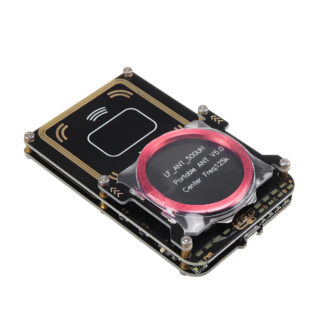If you have not checked out the Keys vs RFID page, definitely do that first then come back here. Got it? Good. So RFID systems are built around the idea that each RFID chip has a unique serial number. Because each chip is uniquely identifiable, things like door locks, access systems, computer networks, etc. can grant or revoke permissions for that specific RFID chip to any or all devices, doors, networks, etc. with confidence.
Unfortunately RFID came along before chips were able to perform strong encryption, and now those old insecure legacy chips are the cheapest chips available. So of course, modern access systems still use badges and cards made with cheap chips that are completely insecure. Taking advantage of this, certain chip makers created some chips that can be programmed to act like other chips. This only works for some types of badges and cards though.
If you want to start playing around with tag cloning, you’ll definitely want to pick up a Proxmark3 Easy! This is the tool you can use to detect what kind of chip your keyfob or access card has inside it, and with that information you can determine if that chip’s data is clonable to an implantable chip.
Here are some videos about how to use the Proxmark3 to detect the chip type in your source tag (card, fob, badge, etc.) as well as how to clone that to a chip implant.

